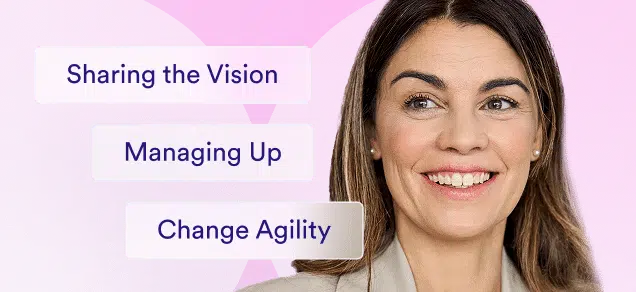The term “microaggressions” was coined in 1920 by psychiatrist and Harvard University professor Chester Pierce. He used the term to describe the many insults and slights he regularly witnessed non-black Americans direct towards African Americans. By the early 21st century, the use of the term expanded to apply to any verbal or nonverbal insults targeted towards individuals of marginalized groups. This includes anyone who identifies as LGBTQ, disabled, living in poverty, etc. In the modern workplace, microaggressions come in many forms and can be difficult to spot. Still, workplaces must not tolerate these slights if they intend on building a work culture and environment where every employee feels they can be their true selves.
While microaggressions at work can be intended to harm, oftentimes people don’t intend their statements and actions to offend their recipient. The microaggressor’s privilege and implicit or unconscious bias might keep them from understanding how their message could be interpreted negatively. This, however, doesn’t lessen the impact of their actions. While an individual might have been well-intentioned, the impact their actions have on another person can’t be ignored. Microaggressions can leave a lasting negative impact in the workplace; they can damage working relationships and have detrimental effects on the mental health of employees.
When learning how to navigate microaggressions at work, it’s best to start by understanding what a microaggression is. They range from very obvious to very subtle slights and can be difficult to detect at times. It’s helpful to put yourself in another person’s shoes to better understand how a comment might make them feel. To help you identify and address microaggressions at work, we’re sharing some common examples and tips for recognizing and responding to microaggressions.
4 examples of common microaggressions at work
1. Assigning gendered tasks

Alice is the only female member on her team and every time they have a meeting, her boss Allen requests Alice take notes. He never asks anyone else, just Alice. Allen loves how thorough and straightforward Alice’s notes are and appreciates her keeping everyone on task throughout the meeting. Alice, on the other hand, feels like she’s tasked with taking notes because she’s a woman and is frustrated because she’s too busy with note-taking to speak up and share her opinion during the meeting. She feels this is unfair to her and hurting her career growth.
2. Ignoring gendered pronouns
Jon is a transgender employee and has asked all of his coworkers to use the pronouns he/him/his when referring to him. All of Jon’s colleagues have done their best to make the switch – all except Sally who continues to misuse Jon’s pronouns even though she’s been repeatedly corrected by Jon and other colleagues. Sally’s behavior has left Jon frustrated and hurt. He feels like he can’t be himself around Sally and actively avoids her in the workplace.

3. Mixing up names
Esther is Chinese-American and her colleague Rose is Korean. Esther and Rose’s boss, Taylor, always gets the two mixed up and frequently calls Rose by Esther’s name and vice-versa. Sometimes he’ll even email one of them something that was meant for the other.

While it was funny at first, both Rose and Esther are annoyed that Taylor can’t seem to tell them apart and are worrying it’s affecting their career growth. After all, if he can’t tell them apart, how can he keep track of their work progress and individual contributions? They are the only two members of the team he has trouble telling apart and they believe it’s because they are the only two Asian members of the team.
4. Singling employees out by race

Jeremy’s boss Anna has recently taken an interest in how their product is reaching and appealing to diverse customers. Because Jeremy is the only black employee on the team, she always puts him on the spot during meetings to ask what he thinks the team should do. While Jeremy likes that Anna is making diversity a priority, he feels uncomfortable being put on the spot in front of his peers because of his race. Not to mention, he doesn’t feel comfortable speaking on behalf of his entire race.
How to address microaggressions in the workplace
Now that we’ve covered several examples of microaggressions in the workplace, here’s what you can do to address them when you see them happening:
1. Think before you act
The best way to combat microaggressions is to think before you speak. Ask yourself, “could this comment be misunderstood or interpreted differently by this person?” If the answer is yes, think of a different way to get your intention across.
2. Apologize
If you commit a microaggression, own up to it and apologize. Try not to get defensive as this can worsen the situation and invalidate the receiver’s feelings. Just admit you were wrong and promise to do better next time.
3. Learn from your mistakes
Follow through on your promise to do better. Take time to educate yourself to ensure you don’t microaggress against someone else. You could read helpful articles (like this one!) or even take an class where you can safely practice addressing microaggressions.
4. Build an inclusive workplace
Go a step further to help build a safe and inclusive workplace by calling out any microaggressions you notice and holding your colleagues accountable for their actions. This not only helps take the burden off the receiver to speak up, but it also sends a message that you’re all looking out for each other and won’t tolerate that type of behavior—whether intentional or not.
—-
Interested in learning more about how to combat microaggressions at work? Sign up for our leadership class, “Address Microaggressions on Your Team.” You’ll learn how to manage microaggressions as a leader, how to lead sensitive conversations around microaggressions with team members, and more.
If you are looking for a DEIB training for your organization, Hone offers live interactive classes that include topics like “The Dangers of a Culture of Conformity”, “Build High Trust Relationships”, and “Embrace Diversity with Inclusion”. Ready to see more? We would love to show you how live training can be scaled, delivered, and measured for teams of all sizes in any number of locations.












